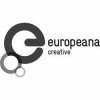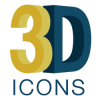October 2012 (3 months)
The aim of the project is to contribute towards a move away from traditional assistive software which uses a computer simply as an alternative to pen and paper and towards developing develop next generation learning software which uses a computer system to facilitate the learning process for children with dyslexia and/or dysorthographia. Towards this end, the Consortium will develop an Integrated Intelligent Learning Environment for Reading and Writing (ILearnRW) demonstrating the following features: 1. User modeling. In an intelligent learning system, a profile for each learner should be built and correlate with user group profiles. The profile, among other things, should include the type of dyslexia, the error types the user is likely to make and their severity, the learner’s age and cognitive age, as well as information related to the learning history and progress during the usage of the system. 2. Teaching strategies. The interaction of a learning system with a child should be based on a teaching strategy that supports the individual user in fulfilling its learning goals, i.e., to learn to read and write/spell correctly. 3. Classification of learning material. Education content classification should be an integral component in any learning management system, regardless of whether the reading/writing activities are part of a structured teaching strategy. For example in conventional teaching approaches, a tutor helping a child to learn reading/writing always selects with particular care the learning material to use based on the child’s needs and capabilities. 4. Personalized content presentation. If the errors the user is more likely to make are known or modeled, we can enrich the text presentation with more visual cues using techniques which combine highlighting, text-reformatting and word segmentation. In addition, the type of dyslexia of the specific user should greatly influence the text presentation process. 5. Engaging learning activities. Children are easily distracted from an activity if they do not find it interesting and motivated. High degree of learner engagement should be sought in any learning activity. To achieve this goal, we choose to integrate learning activities into serious games where the game scenarios and interaction mechanisms will depend on the learner’s profile, the learning strategy adopted and the student’s progress or performance. It is anticipated that a creative game scenario, especially if it is coupled with a positive reinforcement mechanism, will extend the time period a child engages in learning activities. 6. Evaluation of learning. We conjecture that when a game is coupled with a game usage logging mechanism, valuable data can be collected regarding the user’s actions during the game, and given that certain actions are associated with successful learning events, a quantitative assessment of learning can be inferred and his profile can be consequently updated. 7. On-line resource bank. It should contain coherent collections of data which support specific teaching strategies and constitute well structured learning/intervention programs, forming a resource bank valuable to learners, educators and dyslexia professionals. The resource bank should be also to offer its customized views of its material to each learner, based on the learner’s profile, i.e., the resource bank should be profile-sensitive. The ILearnRW environment will support the English and Greek languages.
Funded under: FP7-ICT









